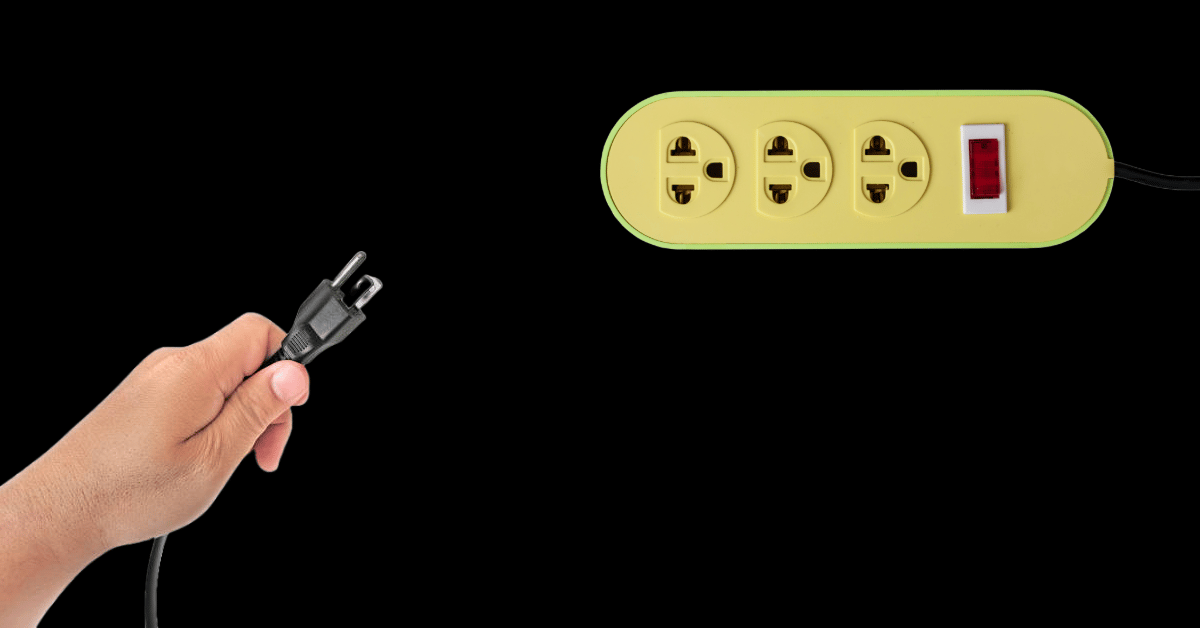
Everyone dreams of being timeless, of being recognisable and relevant across decades and generations - of being Mario Kart.
In case you’re not an epic gamer, the Nintendo Switch 2 just launched and with it Mario Kart World, the latest instalment in the 33-year-old racing game series. The game is selling stupidly well right now and seeing the same if not greater enthusiasm as when the series first launched in 1992. It’s all because Nintendo’s been pushing the right buttons, and brands (gaming and non-gaming) could learn a thing or two.
- Devin Pike, Guest Editor 💜
WHAT’S HAPPENING IN MARKETING TODAY?
Snapchat publishes user behaviour report, WPP Media loses AGAIN & AI escalates the LA protests

Snapchat shares new trend insights, and how brands can tap into them
The platform has published a new “Snapchat Generation Report”, which provides 26 pages of data-backed notes on how users are engaging with the app, what works on the app, and how people are looking to connect, with each other and brands, in the app.
The report also looks at a range of key trends identified through Snapchats usage data, reflecting the interests and behaviours of its audience. Some of these include lo-fi content, in-the-moment connection/ expression, and being highly active to establish creator connections. Full report here x.
Mars & Paramount drop WPP Media, its agency of record, in favour of Publicis
And they’re not the only ones, for this is only the latest coup by Publicis against its long-time rival, having also won Coca-Cola’s North American account and Sky’s European media account. Being dumped 4 times? Ouchies.
Paramount global states the decision, after 20 years of partnership, was driven by a push for “greater efficiency”. Mars Snacking says its to “remain iconic”. It all comes after WPP CEO Mark Read announced he would be stepping down from his role at the end of the year, leaving the group searching for a successor. Yikes.
AI chatbots are worsening LA protest disinformation
I want to start by saying my heart goes out to the families affected by the mass deportations, because this sh*t is seriously messed up. Unfortunately, chatbots like Grok and ChatGPT appear to be making the situation worse. When residents of LA took to the streets this week to protest the ICE raids, the news was, as always, fast moving and divisive. But so was the misinformation being posted online Right-wing posters on X and Facebook quickly flooded feeds with inaccurate information, using well-worn tactics like repurposing old protest footage or clips from video games and movies, and claiming that the protesters are paid agitators being directed by shadowy forces.
Since platforms like X and Meta have basically ditched moderating content on their sites, users turned to AI chatbots, which has also completely misdirected the truth. Making false claims about the legitimacy of images and their origins, statements about the protesters and their actions has added to an already saturated disinformation landscape, creating an increasingly unsafe situation for protesters and rapidly escalating the situation. For specific examples of the misinformation that occurred, and what was shared by whom, read it on Wired.
-Sophie Randell, Writer
DEEP DIVE
The insane staying power of Mario Kart (and 3 lessons brands can learn from it)

It's wild how a 33-year-old franchise can release a new game in the ripe year of 2025, yet still manage to lead the pack.
When I heard about the recent release of Mario Kart World, I thought two things:
I can’t wait to download that on my Switch
Holy sh*t this game has existed for what feels like forever.
In today’s world, with the insane amount of high-quality graphic games at our fingertips, it almost feels like Mario Kart shouldn’t still be relevant. It was born in the early 90s. It’s chaotic, borderline absurd, and its weapons of choice include bananas and flying shells. Yet every time Nintendo releases a new version, it sells like crazy and captures hearts like it’s the first time.
There’s a reason for that - and no, it’s not nostalgia.
Mario Kart is so much more than a video game. It’s a brand with real cultural gravity. Not because it follows trends, but because it understands its people. It knows how to create joy, friction, and connection. In a world where brands often burn fast and fade faster, Mario Kart offers a blueprint for longevity.
Here are 3 concepts the franchise undertakes to keep itself relevant - not just for a quarter or a console generation, but for a lifetime.
1. Cultural intelligence over cultural relevance
Mario Kart has never chased culture, but shaped it. It doesn’t need influencer collabs or a pop-up on Fairfax to feel current. Its relevance comes from the way it’s embedded into people’s lives. It’s a reference point, a shared memory, a common language. For many, it goes beyond gaming - it’s a social ritual. This is what makes it powerful. While many brands scramble to jump on the next trend, Mario Kart opts for timeless over timely. It’s familiar, but not static. Fresh, but never trying too hard.
This is cultural intelligence in action: a deep understanding of how people behave, relate, and make meaning. And that kind of understanding can’t be faked or fast-tracked. Mario Kart is a shared language, a connector, a nostalgia trip and a flex of joy in the now. It’s what cultural strategist Ana Andjelic might call a “meaning system”: it gives people identity, ritual, and relationship.
2. Freedom within structure is the sweet spot
Mario Kart harnesses a rare, controlled kind of chaos. Every race feels unpredictable: a beginner can easily beat a seasoned player and the lead can flip in seconds. But none of it feels unfair - it feels alive. That’s because Mario Kart is built on a delicate balance: freedom of play, inside a tightly calibrated system.
The mechanics are designed to keep people engaged, whether they’re competitive or casual. It’s fast, it’s fun, and it never overwhelms. There’s strategy, but no steep learning curve. It’s accessible without ever being boring. That’s the genius of it: the illusion of total freedom within a very intentional framework.
3. Social by design, not just by platform
Mario Kart is built for connection. At its core, it’s a game about other people! Even when you’re playing alone, the format, tension and joy of racing all feels social. The tension is social. It’s not just a game about winning, but who you beat, how it happened, and what you screamed while doing it.
It’s the experience of playing it with other people: the borderline abuse of your friends, the betrayal of you tossing a blue shell their way. Even solo, the game simulates that energy. The AI "racers" mimics real players, they react and know how to keep pace with one-another. And all of it is designed to be watched, talked about, and passed around.
Mario Kart isn’t still loved because it’s the perfect brand.
It’s around because it understands people want to experience connection, play, joy and competition. And it's successfully delivered that across decades, devices, and generations.
From the franchise's long-term success, there are 3 deep, strategic lessons brands and marketers can take away:
Don’t chase the algorithm or cultural trends. Build cultural texture, build something that matters in people’s lives. Create your own rituals, references, and language. Be the brand people return to, not just the one they scroll past.
Build worlds, not just assets. Give your audience room to play, remix, and participate: but give them clear rules, symbols, and emotional boundaries. People want autonomy, but they also want to feel held. When you get that balance right, you build loyalty that lasts.
Make things that are fun to live through together. Whether it’s a product, a campaign, or a community, ask yourself what it feels like in a group setting. Build with participation in mind, not just consumption. Design for shared experience.
Too many brands confuse being “on social media” with being social. But Mario Kart proves the power of designing with people in mind not just as end users, but as participants in a shared experience.
-Sophie Randell, Writer
TREND PLUG
An indie spin on Norah Jones' Don't Know Why

The trending sound comes from Teddy Failure's soft, indie remix of Don’t Know Why, originally performed by Norah Jones back in '02.
Fast forward two decades, the song's taken on new life on TikTok as a pairing with sentimental posts about relationships.
Whether you're having all the lads together or watching your dad bond with the cat he "hates", there's always reason to celebrate love of any kind in your life - and maybe joke a bit about it while you're at it.
How you can jump on this trend:
Using the sound, pick a bad, chaotic, or cringy memory you wish you could erase. Set up the question, deliver the Antonio Brown line, and let the humour come from the fact that we all know what you’re avoiding.
A few ideas to get you started:
“What’s the worst campaign you’ve ever run?”
“What’s the most painful client feedback you’ve ever gotten?”
“What’s the most embarrassing social media post you’ve made?”
- Devin Pike, Guest Editor
ASK THE EDITOR

I've had a few of my posts totally flop recently and it's getting hard to keep going. What should I do? -Kerry
Hey Kerry!
I totally understand where you're coming from. It can be hard to keep posting when you aren't getting much engagement. But the only way to improve your content is to keep posting. I'd encourage you to keep putting out content every day, paying attention to your analytics. Experiment by changing up your hook, images, and post style.
Don't be afraid to change tack quickly. You don't need to do the same thing for a month to see if it will work. If you do a few posts in a similar style and none work, try something else. The key is continuing to create content, even when you aren't quite sure what is going to work. Because you'll figure out what works way faster by continuing to post than you will by stopping!
- Charlotte Ellis, Editor ♡
Not going viral yet?
We get it. Creating content that does numbers is harder than it looks. But doing those big numbers is the fastest way to grow your brand. So if you’re tired of throwing sh*t at the wall and seeing what sticks, you’re in luck. Because making our clients go viral is kinda what we do every single day.
